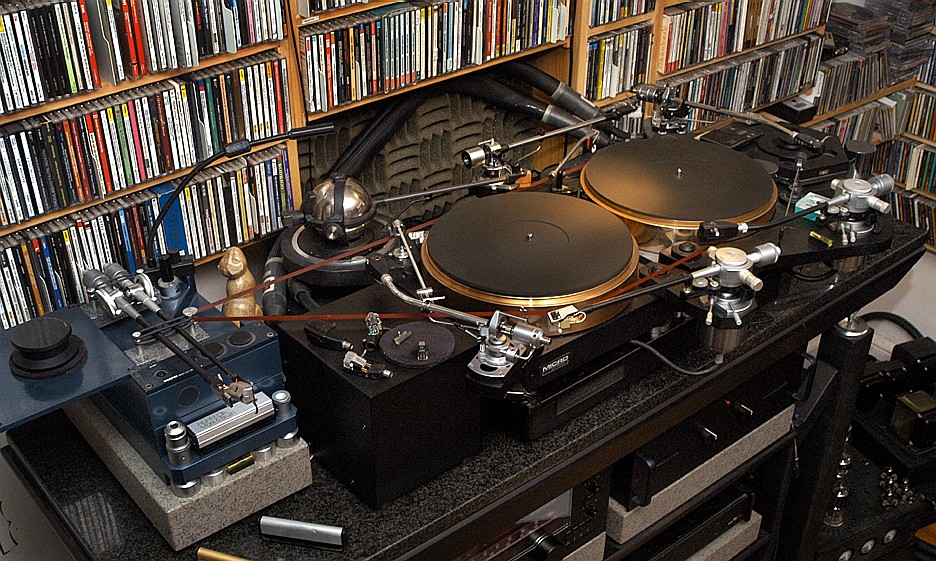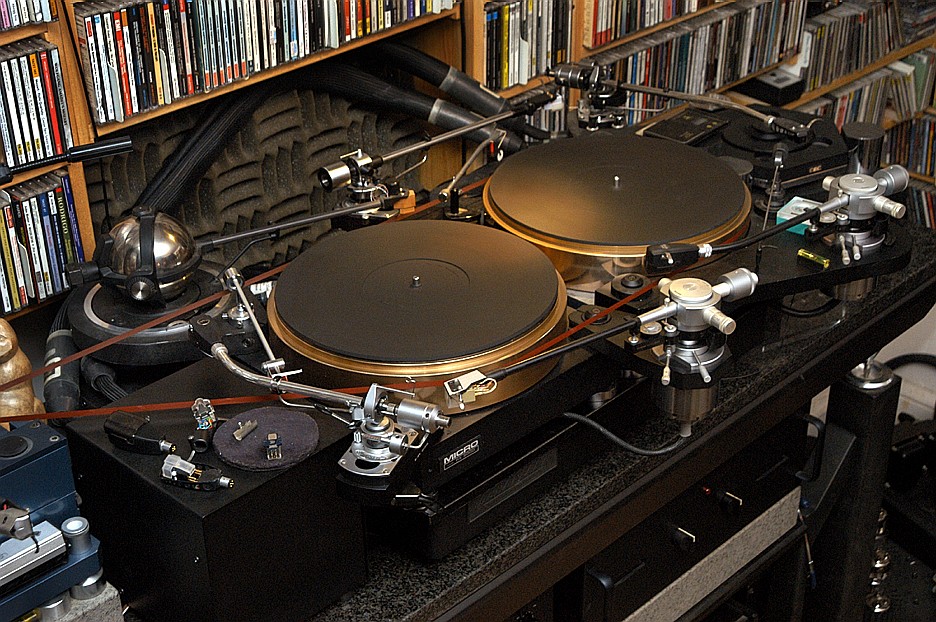|
Sometimes ago I received an email from a NY guy that I know:
“I borrowed a friend's Sansui TU-X1 and just like I heard them at your place it sounds fantastic! What is it about this tuner? There is such an ease to the presentation and no distracting aggressiveness…. Talk about a revelation. I don’t focus on anything but the music. Nothing is emphasized, very even, musical presentation. I actually feel relaxed listening to the tuner… I’m not sure if ill be sleeping tonight bc of the tuner... I remember reading a thread on recording these broadcasts… I’m very interested. This is getting ridiculous...”
I went over this “ridiculous mode” sometimes ago as well and the introduction to the TU-X1-level of FM broadcasts in my audio-live along with the programming quality of Boston’s FM stations made me really to review my relationship with any other sources of music in my listening room, including the vinyl. The diversify and the volume of different high quality musical material that I am getting out of FM is so high that I made me to loose interest for LP/CD shopping. I kind of stopped to be interested for LPs because… the very next hour or the next day it will be another very much worth listening FM broadcast… I so like those FM live events that I have more fun over-paying to people who sell recordings of some great FM events then digging out some kinky LP or CD. It is really shame how much phenomenal live musical events from past never made to mainstream media….
Toward the said my recent listening habits have changed. Among all time my playback is on I have approximately 80% or all time running FM (or recorded FM) and the rest time I spin the LP/CD. When I do spin the LPs I came to the observation that my LP is high maintenance and require to “do” something to reach it’s maximum result. I do not like it and I would like to have the LP playback operating with the same simplicity and stability as FM or CD do. Still, having and loving many thousands selected LPs I decides to converts my LP playback into something that would be as simple of a one-button-tuner (still working how to synchronize the selected MF station with the antenna rotor’s position) and at the same to time deliver the expected level of LP performance. An idea was to make my LP playback handling-free and bring it to the stage where I would allow myself to forget about the entire analogue “know-how”.
The following directions where set:
1) Use only one RIAA corrector for the entire analog playback (six sources)
2) Introduce as many tonearms as I might FUNCTIONALLY need, trying forgetting about the cartridges for good
3) Make entire analog installation a single-button driven not only physically but also functionally
So, it is mostly done now and let me to share some my observation about the process I went through.

First the tonearms. I do not know what make me so like them. I have many versions of explanations. Initially I thought that I so love tonearms because my ego. Then, I thought that it might be a male’s preoccupation with whatever is longer then 9 inch. Then, it recognized in my love to tonearms the fact that I have engendering semi-education. Then I was referring to the fact that in childhood I spent quite a time to do mechanical work (engines and so on…) Despite of all of that I do I have many purely audio justifications why multiple tonearms might be useful. Whatever the real reasons are I have to admit that I just love tonearms. I love them, I know them, I feel them, I like to deal with them as the little mechanical gismos that produce some non-mechanical results. If I see an interesting tonearm I can help to try it. Audio-wise my desire to have multiple tonearms derives from my desire to use different cartridges. Because I DO NOT WHAT TO CHANGE ANYTHING in order to do so and at the same time I would like to put a selected cartridge in it’s optimum operations and sonic condition I need multiple arms. So I need (might need):
1) An arm with a premium, reference quality, full-range stereo cartridge (I use Shelter 901)
2) An arm with a premium, reference quality, having the romantic and “vintage” Sound (I use Koetsu Onyx Platinum and Ortofon SPU Classic)
3) An arm with a good quality stereo cartridge, of simplified conic profile (I use various Denons - 103, 103R, 103D, 103M)
4) An arm with a premium, reference quality Mono cartridge (I use Ortofon Mono CG 25 and Ortofon SPU Mono)
5) An arm with so-so sounding stereo cartridges to play not good, dirty records or to play while I’m working in order do not use up the better needles (MM Grado References platinum)
6) A playground arms in which I could put experimental and try cartridges and WITHOUT screwing the settings on the operational arms
Generally, considering my current familiarity with all imaginable tonearms out there (besides the linear-trucking arms), I have to say that if I started from beginning then I would load my TT with six identical SME 3012 arms. To my ears the 3012 is a perfectly sounding arm and if a person knows how to play its effective mass then it might be use with ANY cartridges.
Second: the phonocorrectors. The RIAA correctors are bitch and everyone who know analog and particularly use multiple arms knows it. Different arms – different cables- different loading, different sound from the correctors…. This is hard to manage. Partially if you use Domains cables then you can’t switch the cables, as they need a few days to calm down to produce a correct bass. I want to spin record instead of the flipping constantly the interconnects and the grounds…OK, now I have a problem. My problem is not even with the cable management but with the fact that after many-many phonocorrectors I eventually concluded that I refuse to listen analog if the signal after cartridge does not flow into an Expressive Technologies transformer. Something that the transformer does makes me very comfy and very agreeable. After all I eventually decided to route ALL MY ANALOG SOURCES into the Expressive SU-2. A month or so ago I commissioned Guy Hummel from Placette to help me to make 0.2mV router with a desirable level of switching quality. The router is direct-coupled with the Expressive transformer’s input and has 6 inputs with desired impedance. The switching is done by gold relays sealed in hydrogen. The router is very simple and I perfectly might assemble it myself but I figured that needed Mr. Hummel’s intellectual and assembling techniques. To build the 250mV operating perms is very simple as well but so far I neither heard nor was able to build myself a line-level preamp that would be as transparent as the Guy Hummel’s active unit.
http://www.goodsoundclub.com/TreeItem.aspx?postID=957#957
Guy still working on the MC-routing unit but I figured that if Guy will not be able to reach the level of absolute non-audibility and transparency then no one would.
The phonocorrector. The Expressive Technologies transformer is direct-coupled to dual mono, custom built and voiced 834PT corrector. In the end this phonocorrector has won (also the Expressive works the best with this corrector). There is a lot on my site about the 834PT.
http://www.goodsoundclub.com/TreeItem.aspx?postID=2074#2074
The rest is very simple: Micro Seiki 5000 (with “help” to platter) and Micro Seiki 8000 sitting atop on an active Vibraplane, driven by one Micro’s motor with 83” reel-to-reel tape. One switch activates the compressor for air suspension and motor. I am kind of getting familiar wit this setup and kind of learning how to get the best from each arm/needle pair (this I know) in context of the different platters. All together it feel very comfortable and what the MC-router will be ready I feel it will be exactly what I meant to have as the ultimate (according to my demands) LP playback station.

Rgs,
Romy the Cat
|